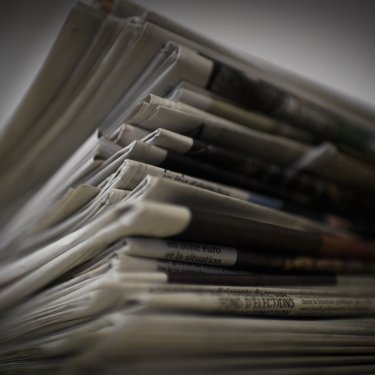Who owns the media in France?

Reporters Without Borders (RSF) is publishing a detailed report that highlights how French media ownership is now dangerously concentrated in the hands of a few billionaires who have constructed often very intricate and opaque share-holding arrangements.
Who owns the media in France? This apparently simple question is actually very complex, according to the findings of this survey, which was carried out for RSF by Julia Cagé, a specialist in media economics.
Using data gathered from December 2015 to August 2016, Cagé has compiled a list of all the shareholders in the news media together with the main economic sectors in which they are active.
These are the main characteristics of the French media landscape described in the report:
- The growing concentration of media ownership is not synonymous with clarity. This study shows that the media ownership structure in France is characterized by complexity and a lack of transparency.
- In France, 51% of the print and online media are controlled by companies from the financial and insurance services sector, which have created complex and opaque shareholding structures that make it hard to identify the final owner.
- The print and online media capital controlled by the financial and insurance services sector is almost three times what the actual “information and communication” sector controls, which is just 18%.
- Nowadays the media are usually owned by companies and rarely by individuals. The big “families” that long owned the media have gradually sold out to corporations in recent decades.
- The French state and its offshoots constitute only 1% of print and online media owners, but public ownership in the broadcast media is much higher - 43%.
- The survey calculates the layers or “ranks” of share ownership between each media and its final owner and the complexity of its ownership structure, measured in terms of “nodes,” finding an average of 2.5 ranks and six nodes in each print or online media outlet. A large number of nodes may just reflect a diverse ownership, with a large number of very small shareholders, but it may reflect a deliberate complexity that makes it harder to identify the individual or company that is the final owner.
- The report points out that an order issued by the National Resistance Council in August 1944 made it compulsory for newspapers to publish the names of their owners and their owners’ professions in each issue. Unfortunately, this order was never enforced.
- The November 2016 law “aiming to strengthen media freedom, independence and pluralism” constitutes a significant step forward. Article 19 of this law says: “Every year, the publishing company must provide the publication’s readers or the online press service’s users with all relative information about the composition of its capital, in the event that 5% or more is owned any individual person or entity, and its governing bodies. It must identify each shareholder (whether a person or entity) and how many shares they hold.”
- This article is an important first step but it is not enough because media outlets are not required to identify the main business activities of their shareholders. As shareholding in the media is extremely fluid, the report calls for the creation of a detailed “map” of media share ownership that is updated in real time and is accessible to everyone, so that the public can always know exactly who owns the media.
The full report can be downloaded here.



